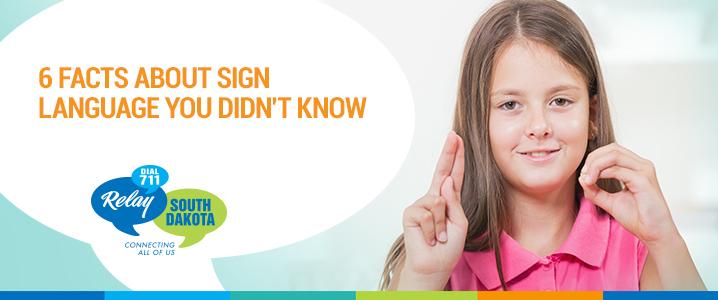
6 Facts About Sign Language You Didn’t Know

Spoken languages are complex and can take years of practice and immersion to gain fluency. Sign languages, like spoken languages, have grammar rules, rhythms and differ from language to language.
Here are six facts you might not have known about sign language.
1. Facial expressions play an important role
Even though many deaf individuals sign with their hands, facial expressions still play a fundamental role in interpersonal communication. When hearing people use spoken language, rhythm and tone are present while speaking. In American Sign Language, facial expressions notate rhythm and tone. That said, the person “listening” in the conversation will also look at the signer’s mouth.
Did you know? It’s not uncommon for ASL speakers to also mouth the words they sign.
2. Brain damage affects sign language
Just as with spoken language, brain injuries (from a stroke, for example) affect the ability to sign. Deaf individuals may not be able to put signs into the correct grammar or put signs into the correct forms with certain types of bodily impairments.
3. Different countries have different sign language
American Sign Language (ASL) isn’t the first or only sign language to exist. ASL actually has roots in older French Sign Language (FSL). Today, there are many different signed languages, each with differences from one another. Like spoken language, signed languages developed from within different groups of people across the globe, subsequently resulting in multiple languages instead of one universal sign language.
4. Sign language doesn’t mirror spoken language
While American English and British English are similar in many ways, ASL and British Sign Language (BSL) are quite different. This is a result of sign languages developing within the deaf communities, separate from spoken language. In fact, ASL shares more common ground with FSL than BSL.
5. Sign languages’ grammar differs from spoken languages’
Sign language has grammatical rules for more than just what forms the hands take. These rules don’t always parallel with spoken language, either. Eyebrow position, eye position, motions made by hands and where the signs occur in relation to the body all factor into the language. Incorrect grammar will result in confusion, just like spoken language.
6. Babies pick up sign like spoken languages
If you’ve been around a baby learning to talk before, you know they generally start out by speaking gibberish but develop language over time. Babies growing up in a signing home develop signing skills the same way.
Babies with signing caretakers will slowly start to pick up on signing through natural interaction. A baby’s signing will start off with cute, simplified baby signs but eventually grow into the more complex hand shapes with improved grammar.
Found in: Community


